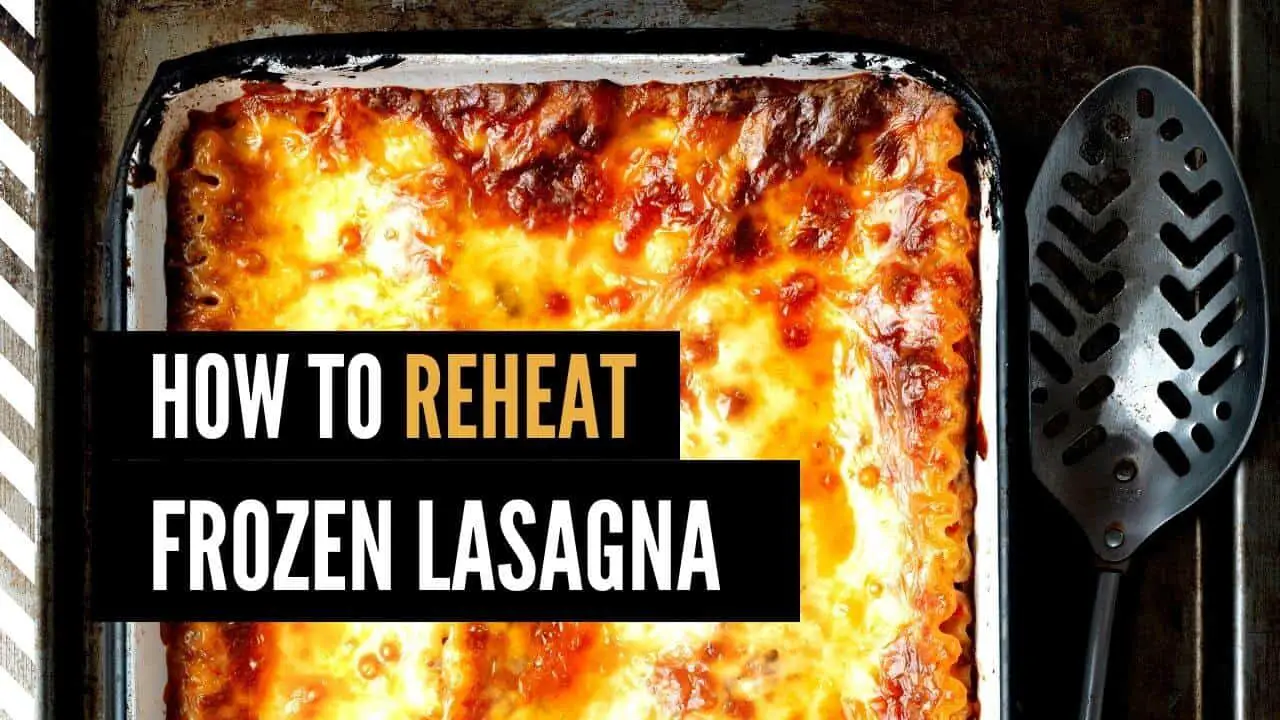Few things beat a hearty lasagna with its crispy pasta edges, creamy bechamel parmesan sauce, and rich tomato reduction, it’s a wonderful Italian classic and probably one of the most loved foods in the world.
The problem is that leftover cooked lasagna only keeps up to 5 days in the fridge and once frozen, reheating lasagna isn’t as easy as you might think.
Well, it is quite a straightforward process, but to get the best result and make it taste again like fresh out of the oven, there are a few tips you can try out.
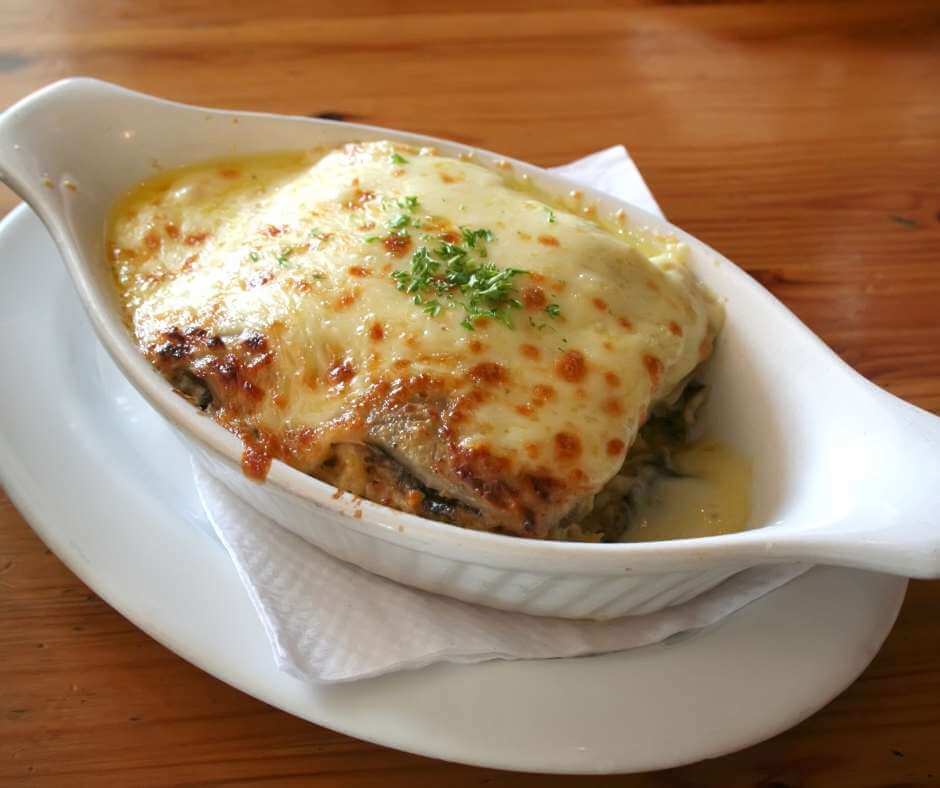
Luckily whether you have made your own or bought a lasagna from the supermarket you can freeze it and it will maintain its quality for around 3 months, while it is safe to eat it for a little while after this point, it might not taste quite as good.
Tips For Freezing Lasagna
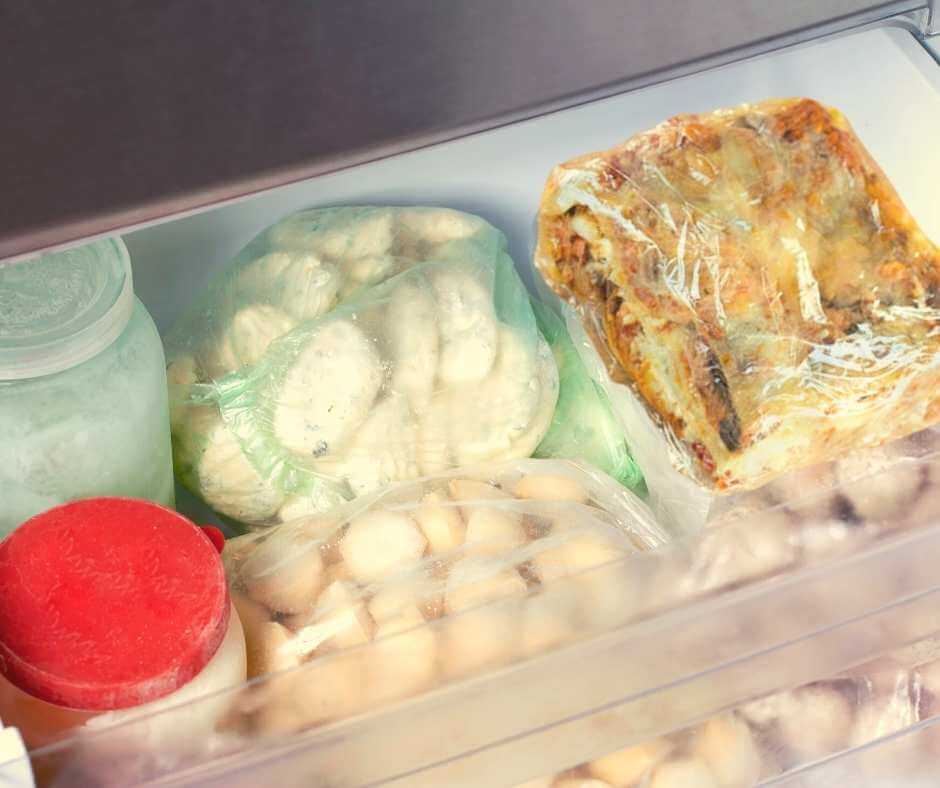
Before I get into the details of cooking lasagna from frozen, there are a few tips you should know about freezing your lasagna.
The first tip is for those who are making it from scratch at home. If you are making your lasagna for the future, then just assemble it and freeze it. When the time comes to cook your lasagna, it will taste as if it has been made fresh that day.
If you have already cooked your lasagna and have some leftovers, then you can still freeze it and enjoy it later, but the texture and taste may be a little different. In this case, allow it to cool for an hour before freezing.
Storage is important for maintaining the quality of the dish. Make sure you wrap it up tightly with either foil or cling film to keep it fresh.
Finally, use a label to write a ‘use by’ date so you don’t forget about it, you wouldn’t want that delicious lasagna to go to waste.
Now you’ve frozen your delicious lasagna, let’s talk about the cooking time when reheating it later.
Defrosting And Cooking
There are several factors that can influence the cooking time: Portion size, cooking method, number of layers, frozen versus defrosted, and whether it was just assembled or already fully cooked before. In general, lasagna is properly reheated when the temperature in the center of the dish is above 165°F (74°C).
Also, you want it to have a nice browned top with slightly crisp edges. For the approximate recommended cooking time check each individual cooking method below.
Cooking Frozen Lasagna Without Defrosting It
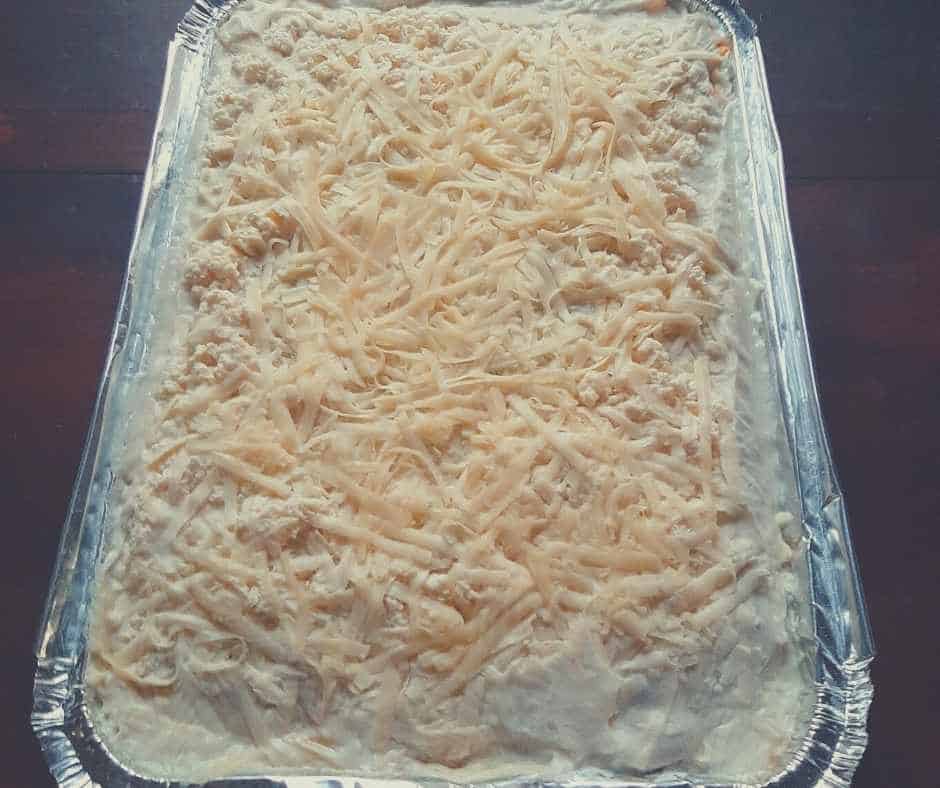
There are a few dangers to thawing and defrosting frozen food on the kitchen counter as harmful bacteria will start to multiply fast when food is left at room temperature for more than 2 hours.
Although frozen lasagna, whether store-bought or homemade, is perfectly fine and even recommended to be cooked directly from frozen, the best way to thaw it is to take it out of the freezer and leave it in the refrigerator overnight to defrost.
DO NOT defrost it on the kitchen counter at room temperature.
Read Also: I Left Pizza Out Overnight – Is It Still Safe to Eat?
1. Bake It In The Oven For Best Result
In my opinion, the best way to cook your frozen lasagna is in the oven.
Oven-baked lasagna gives a lovely crisp top to your dish while heating through the rest of the layers and filling. Keep in mind that this method will take longer than in a microwave so make sure you plan ahead.
The first thing you need to do is preheat your oven. I recommend a temperature of 350°F (180°) to ensure your lasagna cooks through and doesn’t dry out. Cook for about 35 minutes in the middle of the rack if the lasagna has already defrosted. If cooking from frozen then add an extra 15-20 minutes to the cooking time. For store-bought lasagna, always follow the temperature and cooking time instructions written on the packing.
As your oven is heating, cover your lasagna with foil, this is important as it will ensure the cheesy topping to your lasagne doesn’t burn and it will keep your filling from drying out.
Now all you have to do is wait until your lasagna is cooked through, expect it to take around 45 minutes for average-sized frozen lasagna (about 4-5 servings).
A good sign that your lasagna is cooked is the sauce bubbling around the edges. Always make sure that it is piping hot throughout before you eat.
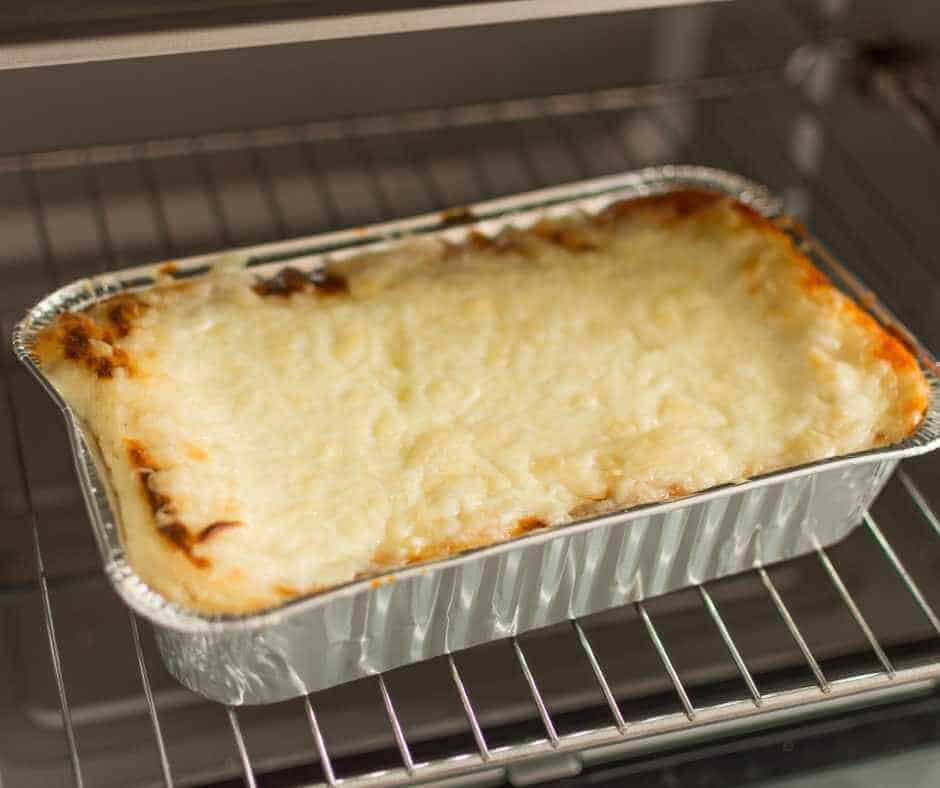
TOP TIP: If you like the top of your lasagna to be a little crisp on top, remove the aluminum foil and increase the heat to 392°F (200°C) for the last 5 minutes of cooking to give it a lovely crispy and golden look.
2. Reheating Frozen Lasagna In The Microwave
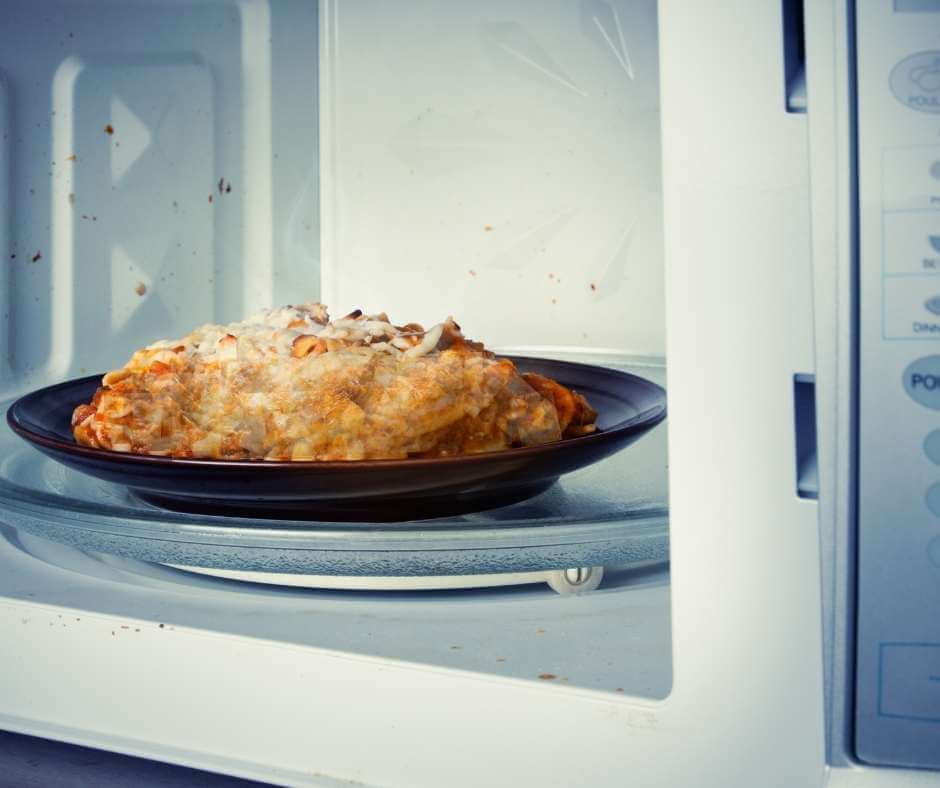
In the microwave? Yes, it can be done.
This is probably the easiest method but as I am a bit of a microwave-snob, it is not my favorite method. Cooking your frozen lasagna in the microwave is the quickest and most convenient option. To begin cooking, portion your lasagna and place one or two portions on a microwave-safe dish.
If you are cooking a lasagna that you have cooked previously and frozen, drizzle a little water over each portion, this will stop the pasta from drying out as you reheat it.
You can also use the defrost function on the microwave for 4-5 minutes to gently thaw it, before microwaving it on full power.
Then you need to cover the lasagna with a microwavable plate cover to prevent your microwave from getting dirty as your sauce bubbles and splatters as it heats up. It could even explode if microwaved for too long.
Do not use foil or cling film to cover it as these materials are not microwave safe. Cook your lasagna in the microwave on full power for 2-minute periods. It will probably take around 6 minutes for one serving to properly reheat and cook but make sure you check it is piping hot before you serve and eat it. If not sure, use a food thermometer to ensure that the dish is 165°F (74°C) or above in the center.
TOP TIP: If you have a bit overcooked it or the edges have dried out too much, some extra sauce can help. Prepare some fresh sauce that you can serve alongside the lasagna.
Read Also: How to Grill Frozen Pizza? (It is delicious!)
3. Yes, You Can Use Skillet

Although a less popular method, you can cook your frozen lasagna in a skillet for excellent results.
To start with, portion your lasagna and place one or two portions in a lightly oiled skillet pan. As with the microwave method, drizzle a little water over the top to prevent it from drying out as it cooks.
Bring the pan up to medium heat to allow the sauce in the lasagna to gently simmer. Now put a lid on the pan and continue to cook for around 30-35 minutes. Again, make sure that your lasagna is piping hot before serving.
TOP TIP: To crisp up the top and give it a nice golden look, put it under the grill for 5 minutes right before serving.
Read Also: Dumb Question: What Is The Best Way To Heat Up Canned Soup?
How Many Times Should You Reheat Lasagna?
Because of the increase in bacteria growth, I would recommend reheating leftovers only once. Nevertheless, technically, as long as you ensure that you cook it through to the required temperature, above 165°F (75°C) then you could reheat lasagna multiple times.
However, you should also be aware that each time you reheat the quality will decrease so I recommend reheating just once for the best results and to be safe. It would be best if you portion your lasagna and just cook one portion at a time.
Can I Eat Lasagna Cold?
Yes, you can eat lasagna cold, in fact, some people even prefer it. Just make sure that it was cooked through properly when making it. Once cooked, allow it to cool, and then place it in the fridge straight away. Remember, lasagna will last no longer than 5 days in the fridge so don’t forget about it.
Now you have three simple methods for cooking your lasagna from frozen. From a safety perspective always ensure food is piping hot throughout before you eat and make sure you label items stored in the fridge and freezer with a use-by date.
